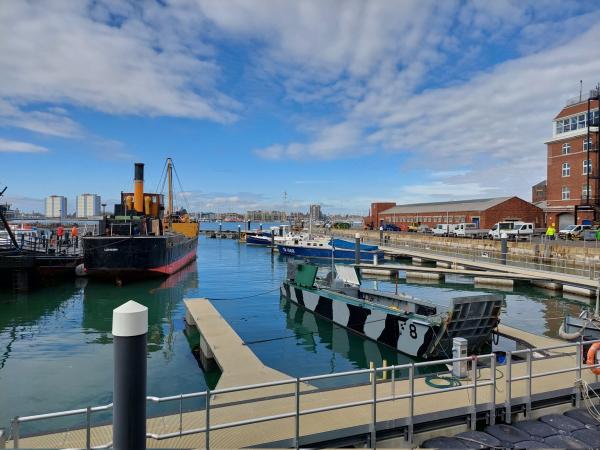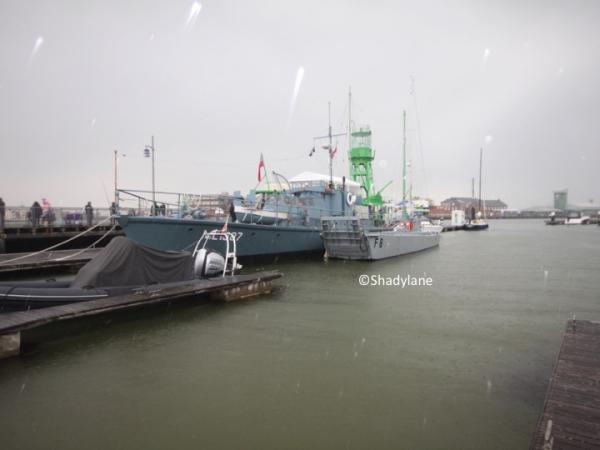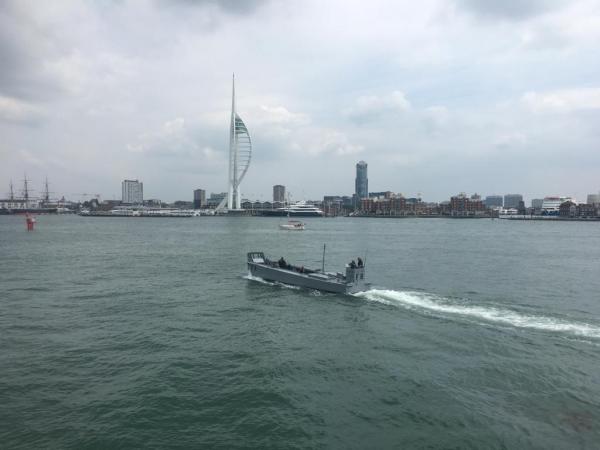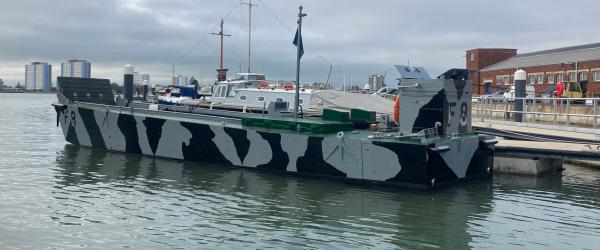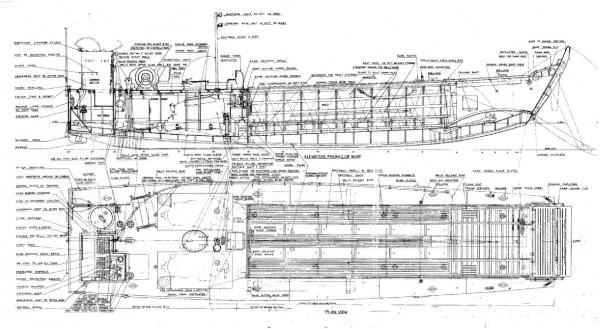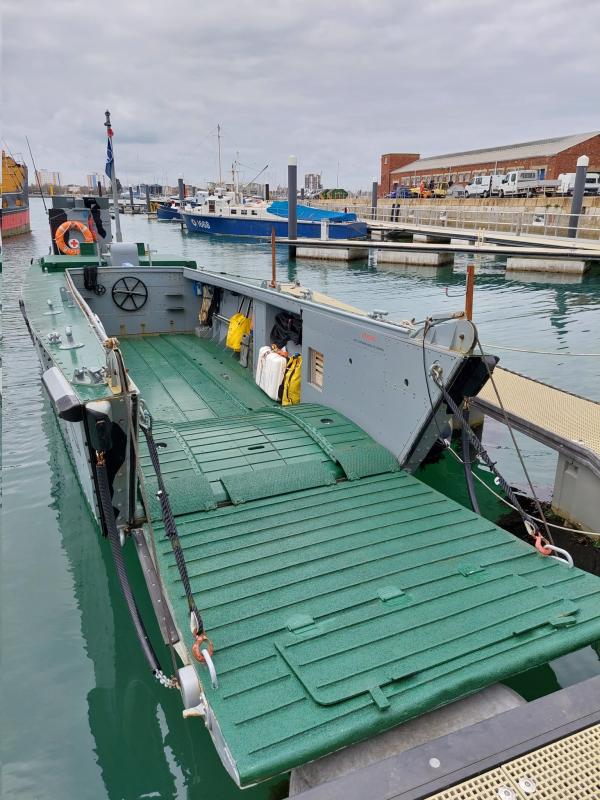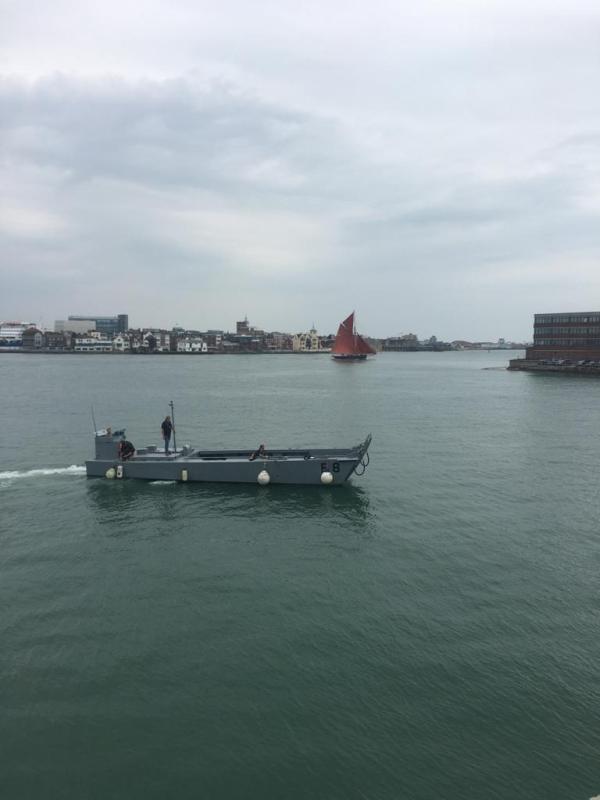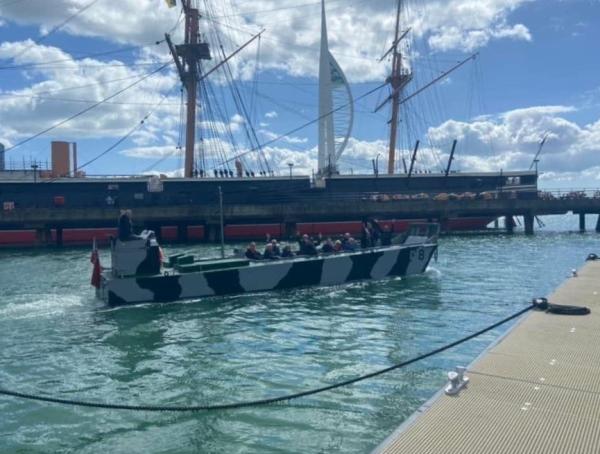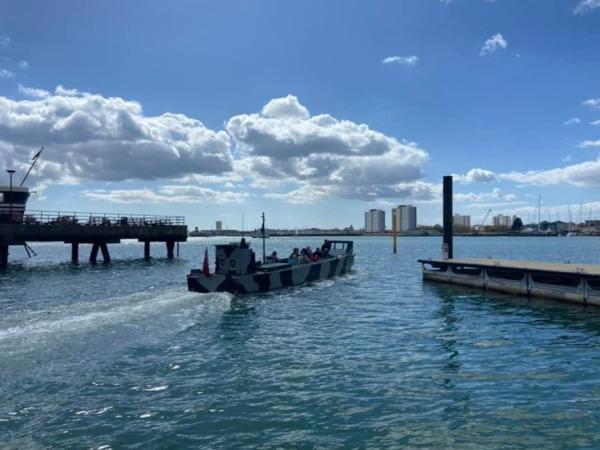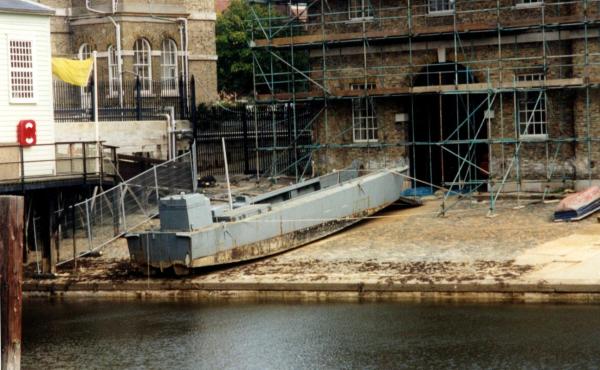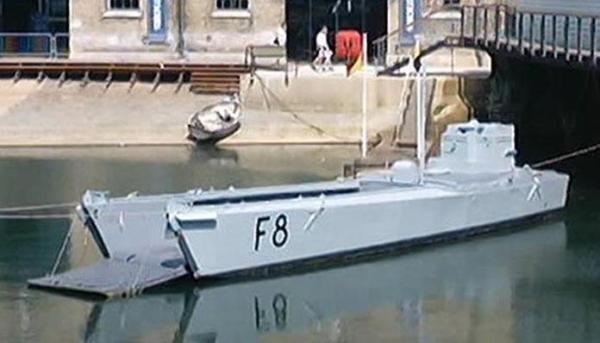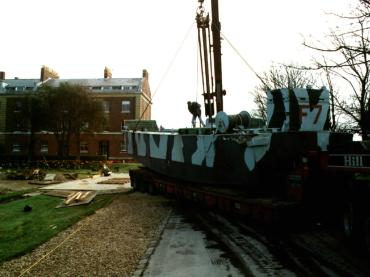

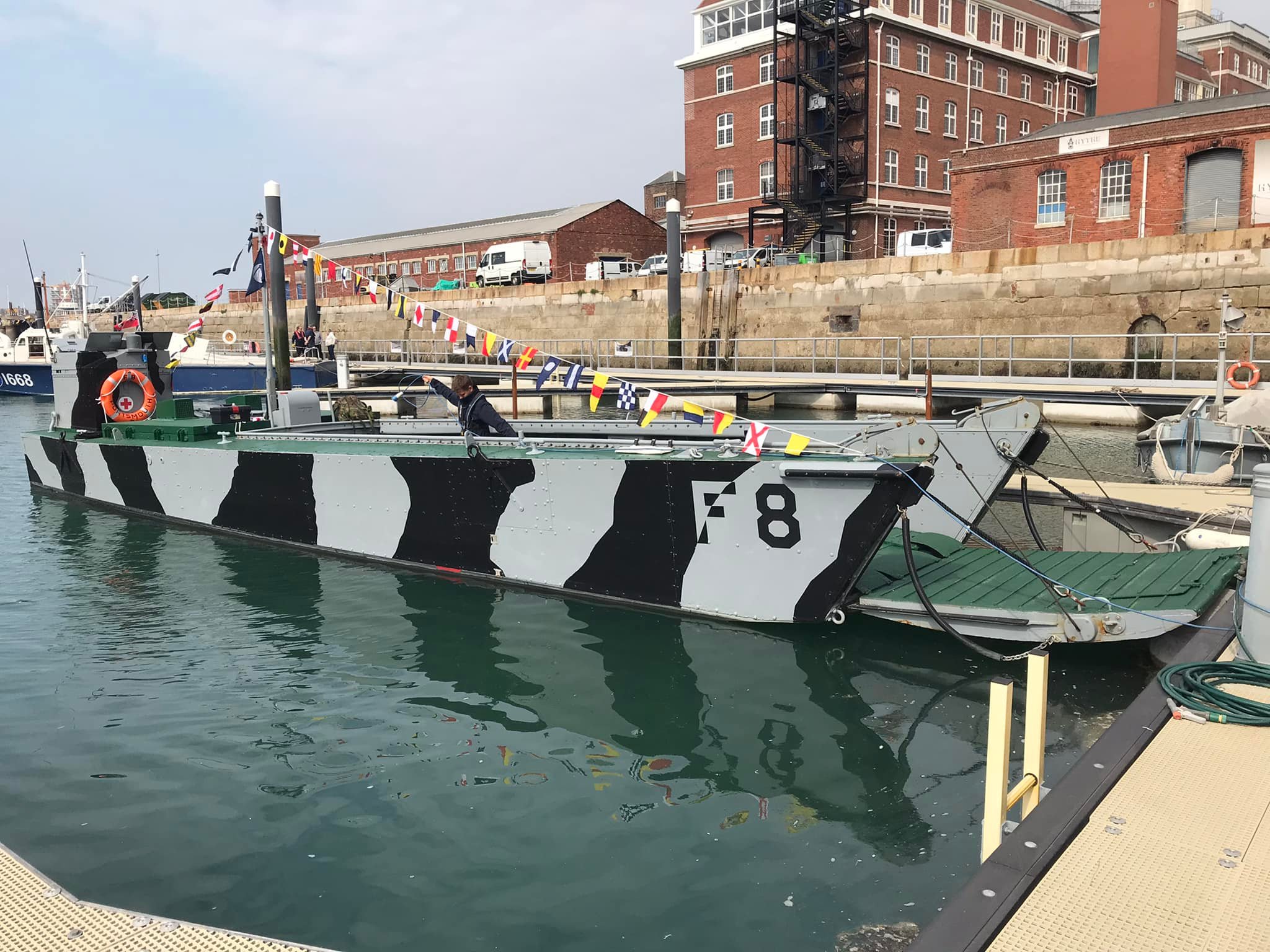
Details
Construction
Dimensions
History
FOXTROT 8 is the local pennant number and callsign of a Mk2 Landing Craft, Vehicle Personnel (LCVP). She is of marine plywood on hardwood frame construction. The well-deck and helmsman's wheelhouse are metal plated for additional protection and she was originally powered by two Foden FD6 two-stroke diesel engines. Built in 1964-5 by Dorset Lake Shipyard, Poole, the second batch of Mk2 LCVPs for the Royal Navy/Royal Marines; the first tranche having been built at Camper and Nicholson’s yard in Gosport between 1958-59. The replacement Mk3 LCVP’s were built in the Portlevan Shipyard, Cornwall in 1974.
FOXTROT 8 and her sisters were the next evolution in the landing craft design from the Landing Craft Assault (LCA) which had served with distinction throughout World War Two. The original designation LCA was changed to LCVP in 1965 to align with the new NATO standardised descriptors.
FOXTROT 8 can carry 35 fully equipped troops or two lightweight Land Rovers. She was one of four LCVPs operated by 4 Assault Squadron Royal Marines (4ASRM) from davits either side of the assault ship HMS FEARLESS and were assigned callsigns/pennant numbers F5 to F8. The four larger Mk9 Landing Craft Utility (LCU) operated out of FEARLESS’s submersible dock and designated F1 to F4. Post 1982, the replacement LCU was re-named FJ in honour of the F4 and her crew that were lost in an air raid on the same day RFAs SIR GALAHAD and SIR TRISTRAM were hit (8 June 1982); a tradition that continues to this day.
FOXTROT 8 saw nineteen years of active service with the Royal Navy & Royal Marines (4ASRM and HMS FEARLESS) around the globe including: the withdrawal from Aden (1965-7), Nigerian civil war (1969), Northern Ireland (1972), Cyprus (1974), Grenada (1974), Lebanon (1983) as well as the James Bond film The Spy Who Loved Me (1977).
FOXTROT 8 is best known for her contribution in the South Atlantic during the 1982 Falklands war. Together with the other amphibious craft of 4ASRM, 6ASRM (HMS INTREPID), 1 Raiding Squadron Royal Marines (1RSRM) and the Army’s Royal Corps of Transport, they were the landing force’s crucial link off the ships of the task force onto the beaches in order to liberate the Falkland Islands. They ferried 3 Commando Brigade ashore (reinforced by 2nd and 3rd battalions of the Parachute regiment) in San Carlos Water, which would become known as “bomb alley”, from the 21 May as part of “Operation Sutton,” maintaining a continuous flow of stores and support ashore afterwards, pausing only for enemy air raids. The landing force were reinforced by the 5 Infantry Brigade from the 30 May, again needing to be ferried ashore with their stores and support.
The Mk2 and 3 LCVPs were phased out of service from 1983 onwards, replaced by the steel-hulled Mk4s. FOXTROT 8 was eventually purchased by the Portsmouth Naval Base Property Trust (PNBPT) in 1997 from Hughes Marine Services of Chichester, a marine salvage yard. In November 2018, a contract was awarded to a private marine engineering company, who rebuilt and restored her. Restoration was completed in May 2021.
FOXTROT 8 is the last-known sea-going vessel of her class. FOXTROT 7 is in storage at the Royal Marines Museum. Two other Mk2 LCVPs are known of and were re-modelled to resemble American LCAs for the film Saving Private Ryan (1998). These can now be found standing sentry, one on a roundabout on the A27 near Worthing in Sussex, and the other in Ouistreham, France.
Now fully restored, FOXTROT 8 operates out of Boathouse 4 at Portsmouth Historic Dockyard, providing harbour tours from spring to autumn and is available for commemorations, veterans’ events and private charters.
In June 2022, FOXTROT 8 was awarded the title of NHS-UK's Operational Flagship of the Year.
Key dates
-
1964-65
Built at the Dorset Lake Shipyard, Poole, Dorset.
-
1965
Entered service with 4ASRM onboard newly commissioned assault ship HMS FEARLESS.
-
1965-67
Took part in operations in Aden and Southern Arabia.
-
1966
Withdrawal of troops from Rhodesia and South Africa.
-
1968
HMS FEARLESS (supported by HMS KENT) venue for Rhodesian peace talks in Gibraltar.
-
1969
Lagos, Nigerian civil war.
-
1972
took part in Operation MOTORMAN/GLASSCUTTER, Northern Ireland.
-
1974
Grenada, transition to independence.
-
1974
Cyprus, civil war and Turkish invasion.
-
1982
Took part in Falklands war, 2 April - 14 June 1982.
-
1983
Beirut, Lebanon - Operation Offcut.
-
1983
Replaced by Mk4 LCVP.
-
1997
Bought by the Portsmouth Naval Base Property Trust from Hughes Marine Services, a boat salvage yard.
-
2018-2021
Restoration carried out to return F8 to seagoing condition.
-
2022
Received the 2022 Operational Flagship of the Year Award from National Historic Ships UK
Own this vessel?
If you are the owner of this vessel and would like to provide more details or updated information, please contact info@nationalhistoricships.org.uk

